The easiest no fail, no-knead sourdough discard bread is mixed together the night before, fermented overnight, and baked in the morning. This recipe has a soft, chewy crumb with a crusty exterior, and that tangy sourdough taste – without all the work.

I know, I know, this recipe isn’t a true sourdough bread recipe. While it does contain sourdough discard, it also contains commercial yeast.
This does two things. It makes it a no-fail recipe as the yeast helps the bread rise whether or not your sourdough starter is active enough. Which then, in turn, allows you to forego the kneading (or stretch and folds) in this recipe.
Sourdough discard bread is the perfect way to use up that extra sourdough discard. Serve it alongside soup, your favorite pasta dish, or make a robust sandwich.
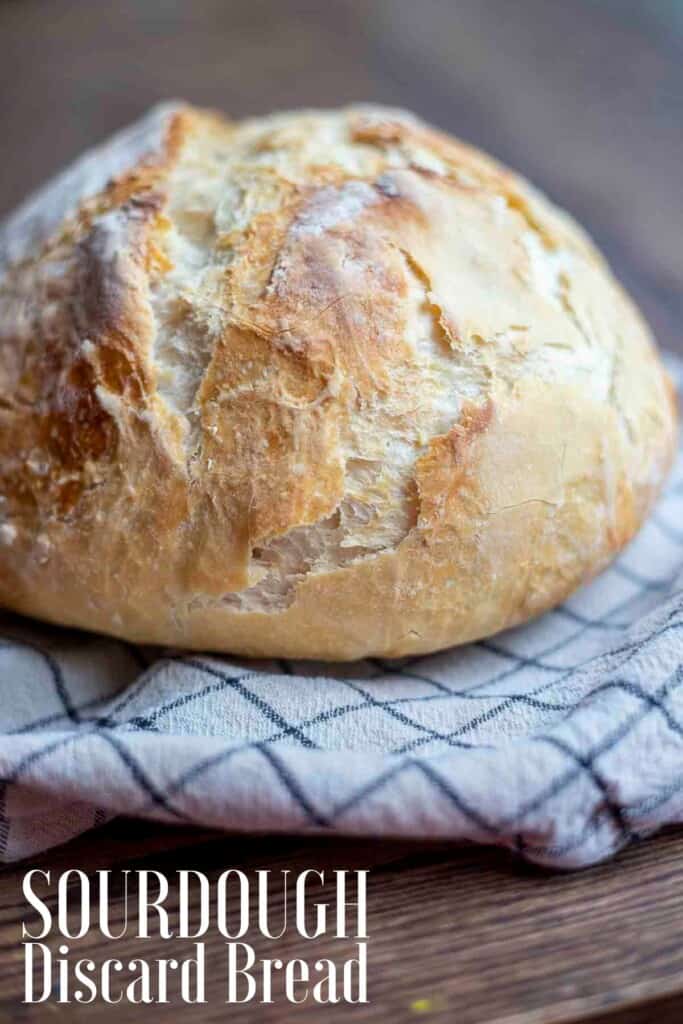
Why you will love this recipe:
Super easy: Mix it up, leave it overnight, shape and bake in the morning. About ten minutes of hands on time allows you to have the yummiest bread.
Delicious: That delicious sourdough tanginess, but without all the kneading and stretching.
Budget friendly: I’m always looking for healthy ways to stretch the grocery budget. This recipe is a great one, especially if you have a super busy schedule.
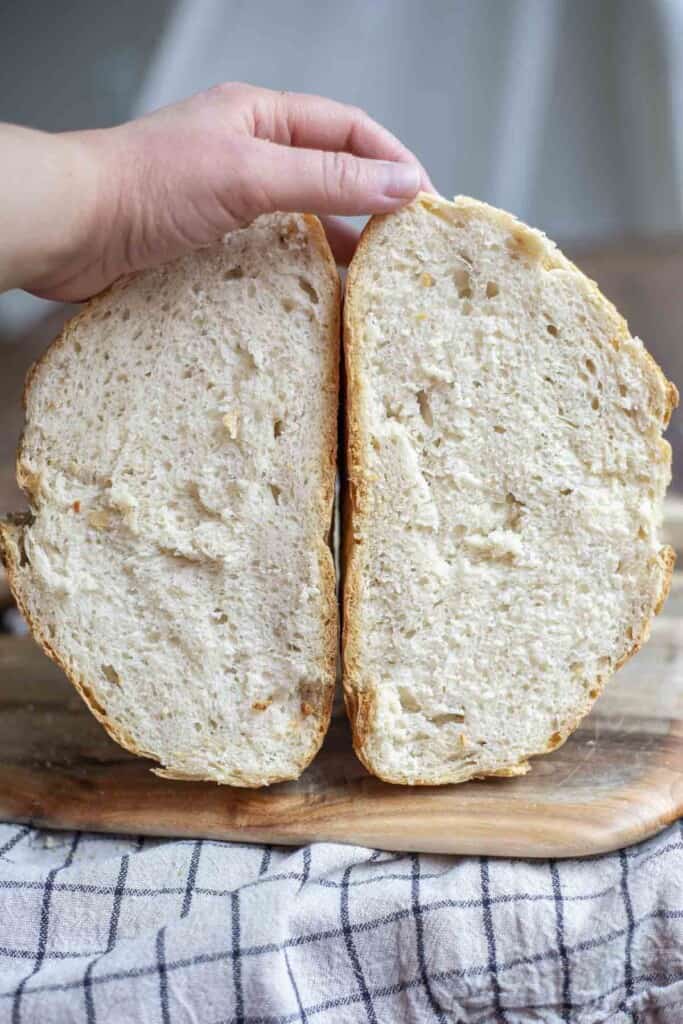
Tips For Making Sourdough Discard Bread:
- To make this bread fluffier and rise better, make sure not to skip adding tension to the dough when shaping. You can easily just plop it onto parchment paper and bake and still get a decent quality loaf, but taking an extra 2-3 minutes to pull the dough edges to the center and then cupping your hand and pulling the dough towards you on the countertop makes a huge difference.
- I like using active dry yeast for this recipe because it can have a slightly slower rise compared to instant yeast.When dissolving the yeast, make sure the water is around 110 degrees. Too hot and you run the risk of killing the yeast.
- To get that crusty exterior, you will need to bake the bread in a dutch oven.
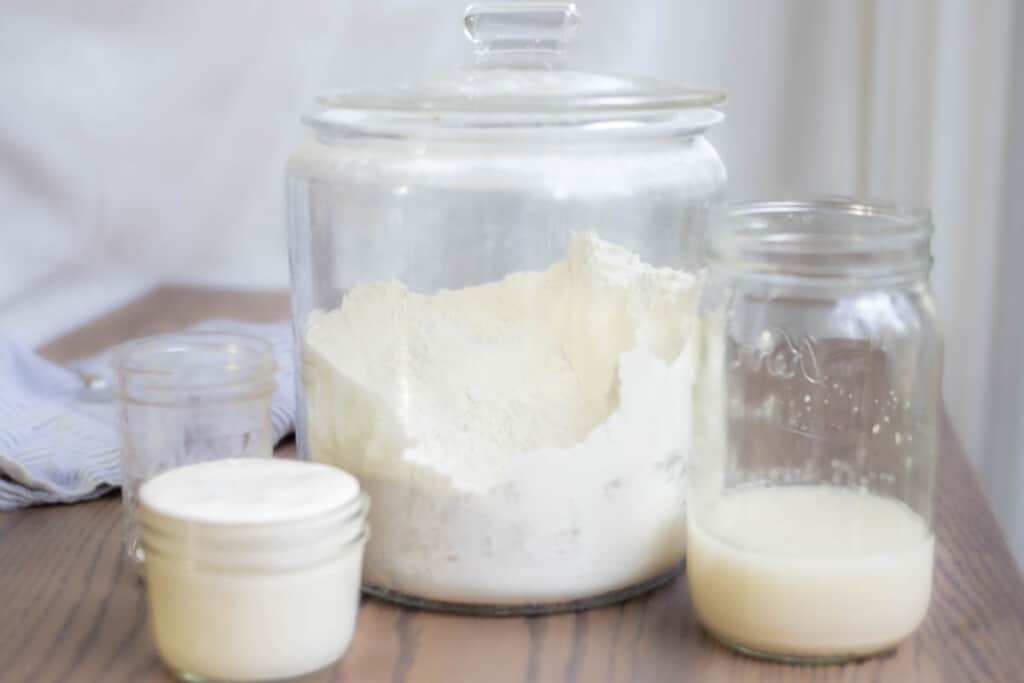
Ingredients:
All-purpose flour: If using freshly milled flour, choose hard, white wheat berries.
Active dry yeast
Sourdough discard: This is sourdough starter that hasn’t been fed in at least 12 hours. It is the portion you would typically just toss before feeding the starter. Active starter could also be used, but you will have a less tangy flavor.
Water: Preferably filtered.
Salt: I use sea salt.
This post contains affiliate links, which means I make a small commission at no extra cost to you. See my full disclosure here.
Tools you will need:
Large spoon or silicon spatula
Parchment paper
FAQ:
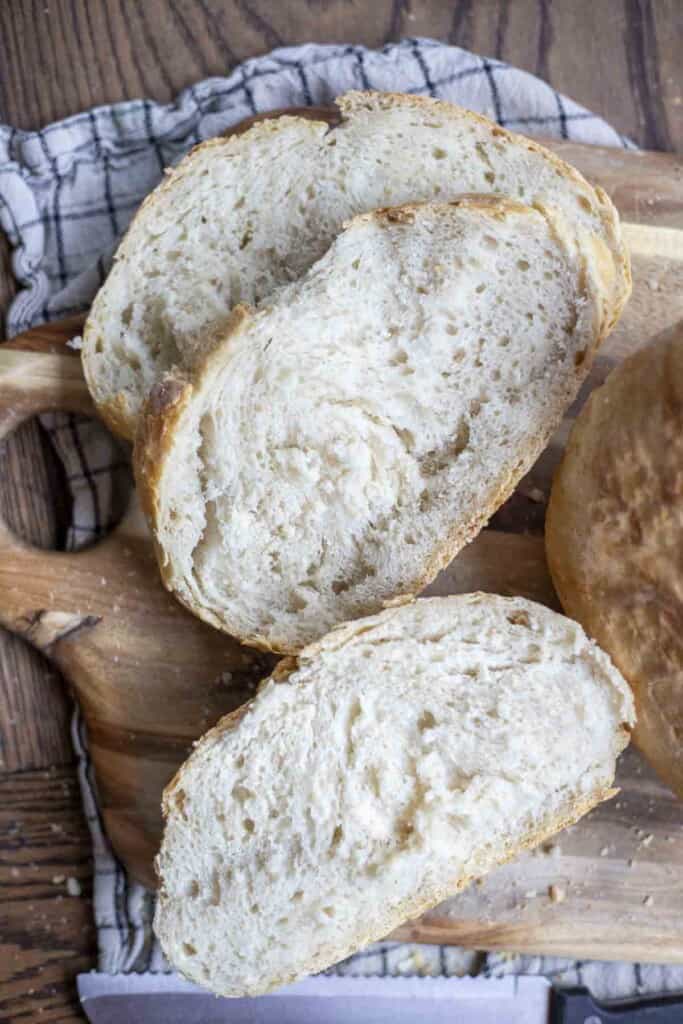
What can I use my sourdough discard for?
Sourdough discard is super versatile and can be used for so many recipes. Some options include muffins, quick breads (like pumpkin, banana, zucchini, etc.) pancakes, waffles, crackers, cakes, and more.
What is the difference between active sourdough and discard?
Active sourdough starter is starter that has been fed water and flour and allowed to sit until it is bubbly and about doubled in size. Sourdough discard is after the starter has peaked, and it has started to come down. It is the portion that you would typically throw away before feeding.
Although, at this point, I never throw away discard because it can be used in so many things.
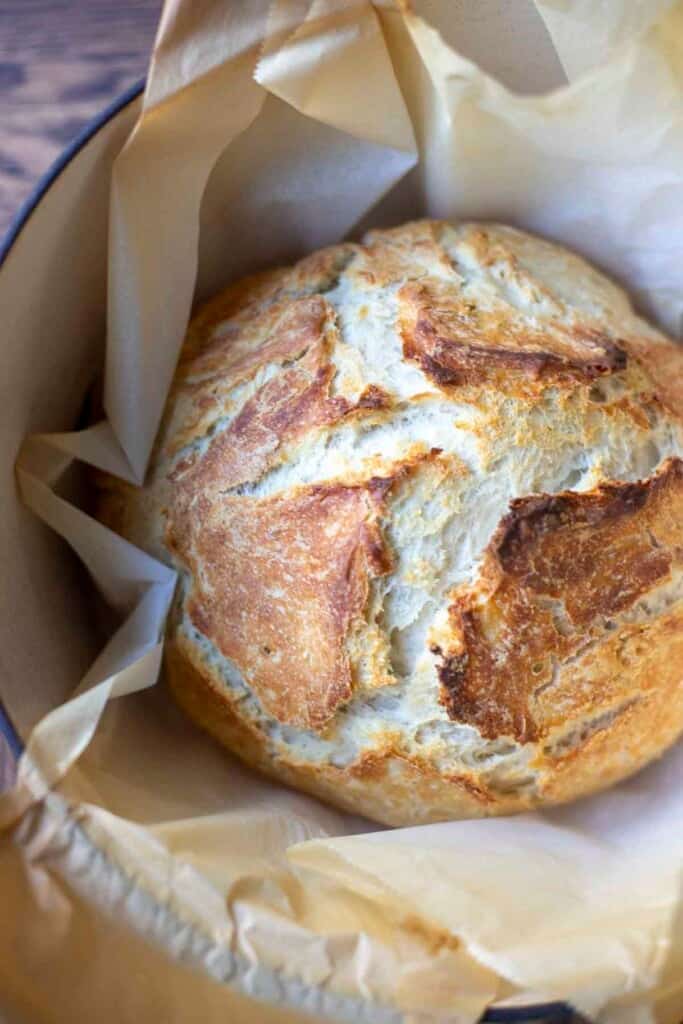
How To Make Sourdough Discard Bread:
Warm water to about 110 degrees. Add active dry yeast and stir. Allow to sit for about five minutes until it gets nice and bubbly.
In a large bowl, whisk together salt and flour.
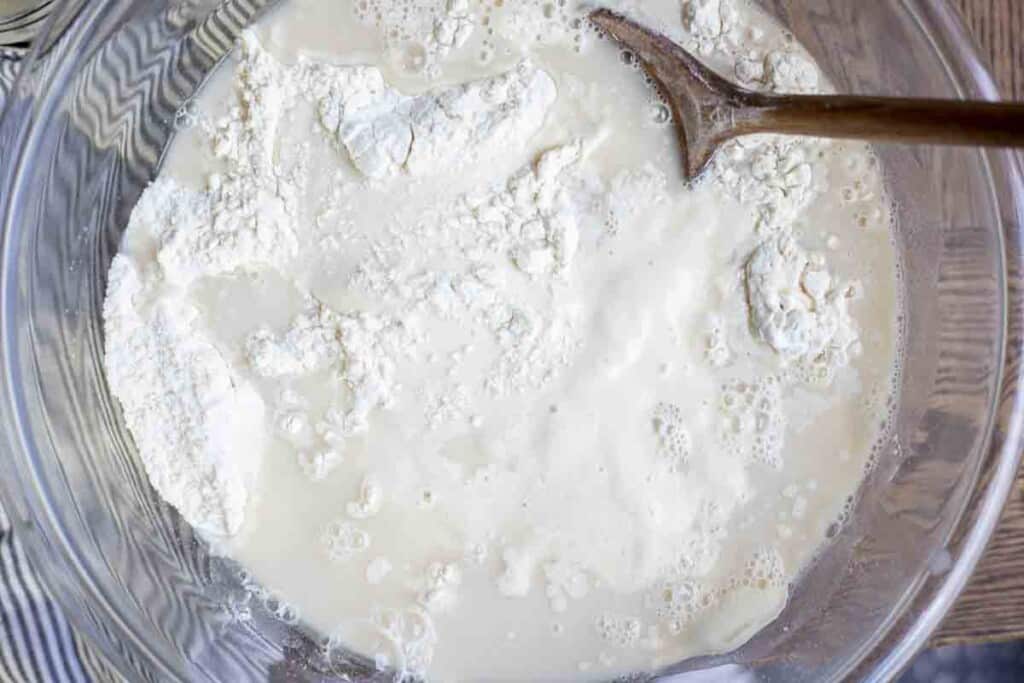
Add sourdough starter and yeast/water mixture.
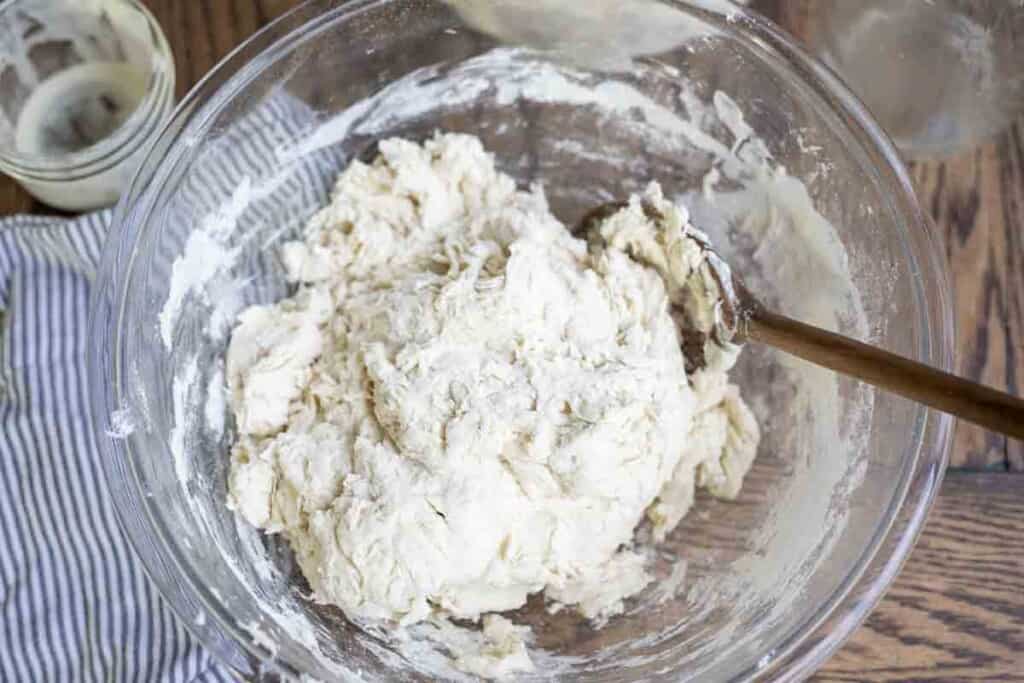
Mix well with a large spoon or silicon spatula. It will be a shaggy dough.
Cover with a lid or plastic wrap and leave at room temperature for around 12 hours.
The next day, preheat the oven to 450. Place your dutch oven and lid into the oven to preheat.
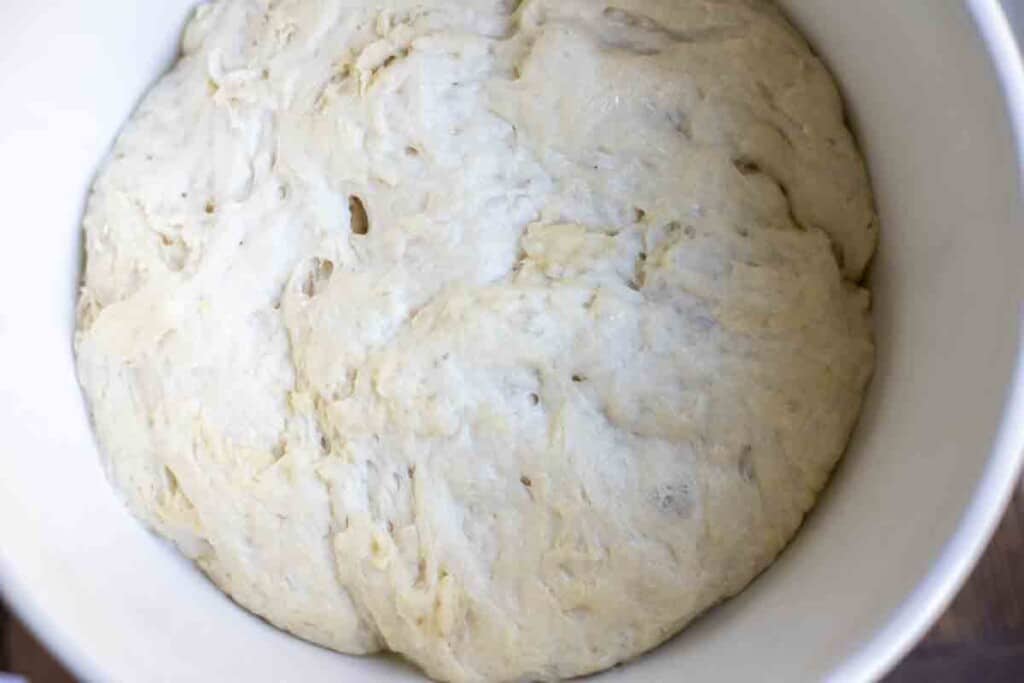
Turn the dough on a lightly floured surface. The dough will be pretty sticky.
Shape into a ball by pulling the sides and bringing them into the center. I do this about 4-6 times. Flip the ball over, seam side down.
Taking your hands, grab the dough and pull it towards you a few times. This adds tension (as does the last step) to the dough, which helps the dough rise more during baking.
Place the dough on parchment paper. Cover with a towel and allow to rise in a warm place for 30 minutes to an hour. The stove top works wonderfully for this as your oven preheats.
Slash with a lame or knife (if desired) and place the parchment paper and dough into the dutch oven and cover with a lid.
Place the dutch oven into the oven and turn the heat down to 400 degrees. Bake with the lid on for 30 minutes, then remove the lid and bake for about 20-30 minutes until golden brown.
Allow to cool completely before slicing. I usually just allow it to cool in the dutch oven.
Storage:
Store uncut bread in a paper or linen bag. Once cut, store cut side down on a cutting board lightly covered or in a storage bag. A zip-lock bag will also work.
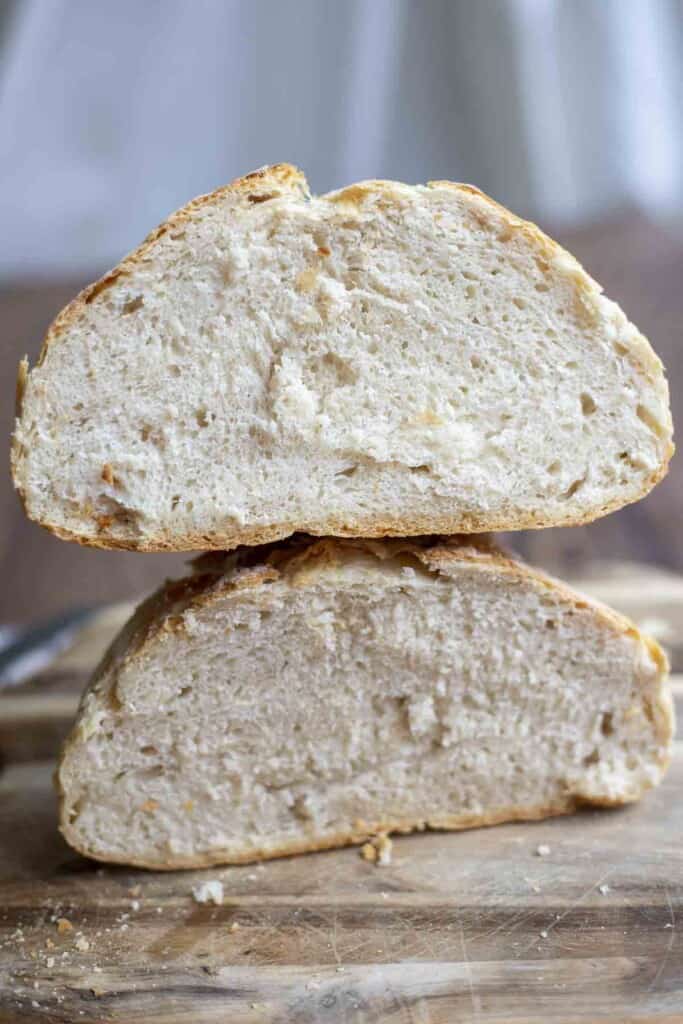
Baker’s Schedule
8 PM: Mix up the dough and cover. Leave at room temperature.
8 AM the next day: Preheat oven with dutch oven and lid inside. Turn dough out onto a lightly floured surface. Shape. Place on parchment paper and cover with a towel for 30 minutes.
9 AM: Bake, then allow to cool before slicing.
Find More Sourdough Recipes:
- Bread Machine Sourdough Bread Recipe
- Spelt Sourdough Bread
- Sourdough Rye Bread
- Sourdough Pumpkin Bread
- Pumpkin Sourdough Bread
If you try this recipe and love it, I would love if you could come back and give it 5 stars!
Sourdough Discard Bread
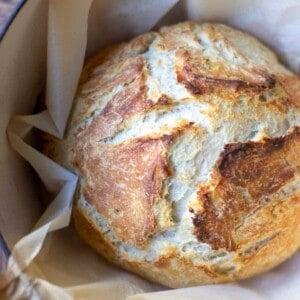
Ingredients
- 1 1/4 cup water, 295g
- 2 1/2 teaspoons yeast or one packet, 7g
- 2 teaspoons salt, 10g
- 1 cup sourdough discard, 255g
- 4 cups all-purpose flour, 575g
Instructions
- Warm water to about 110 degrees. Add active dry yeast and stir. Allow to sit for about five minutes until it gets nice and bubbly.
- In a large bowl, whisk together salt and flour.
- Add sourdough starter and yeast/water mixture.
- Mix well with a large spoon or silicon spatula. It will be a shaggy dough.
- Cover with a lid or plastic wrap and leave at room temperature for around 12 hours.
- The next day, preheat the oven to 450. Place your dutch oven and lid into the oven to preheat.
- Turn the dough on a lightly floured surface. The dough will be pretty sticky.
- Shape into a ball by pulling the sides and bringing them into the center. I do this about 4-6 times. Flip the ball over, seam side down.
- Taking your hands, grab the dough and pull it towards you a few times rotating the dough after each pull. This adds tension (as does the last step) to the dough, which helps the dough rise more during baking.
- Place the dough on parchment paper. Cover with a towel and allow to rise in a warm place for 30 minutes to an hour.
- Slash with a lame or knife (if desired) and place the parchment paper and dough into the dutch oven and cover with a lid.
- Place the dutch oven into the oven and turn the heat down to 400 degrees. Bake with the lid on for 30 minutes, then remove the lid and bake for about 20-30 minutes until golden brown.
- Allow to cool completely before slicing
Notes
- To make this bread fluffier and rise better, make sure not to skip adding tension to the dough when shaping. You can easily just plop it onto parchment paper and bake and still get a decent quality loaf, but taking an extra 2-3 minutes to pull the dough edges to the center and then cupping your hand and pulling the dough towards you on the countertop makes a huge difference.
- I like using active dry yeast for this recipe because it can have a slightly slower rise compared to instant yeast.
- When dissolving the yeast, make sure the water is around 110 degrees. Too hot and you run the risk of killing the yeast.
- To get that crusty exterior, you will need to bake the bread in a dutch oven.
Nutrition
Nutrition information is automatically calculated, so should only be used as an approximation.
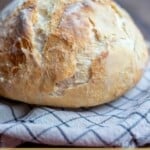
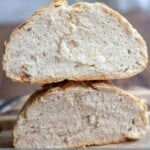
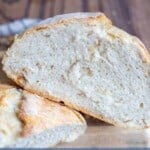
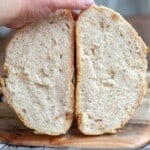
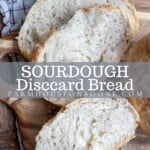

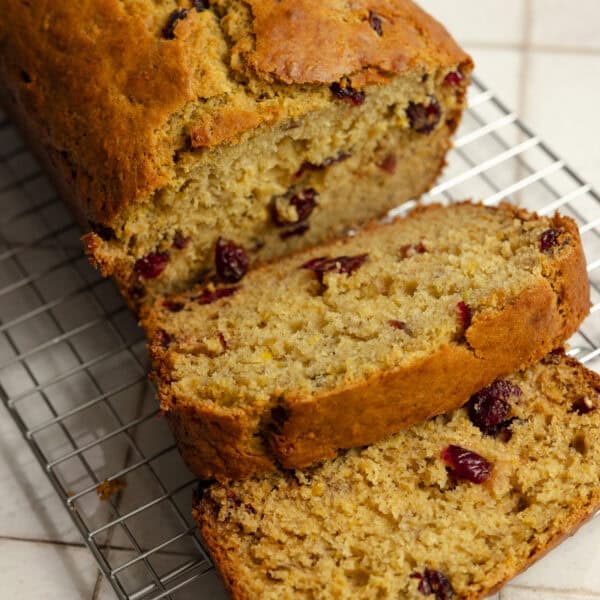

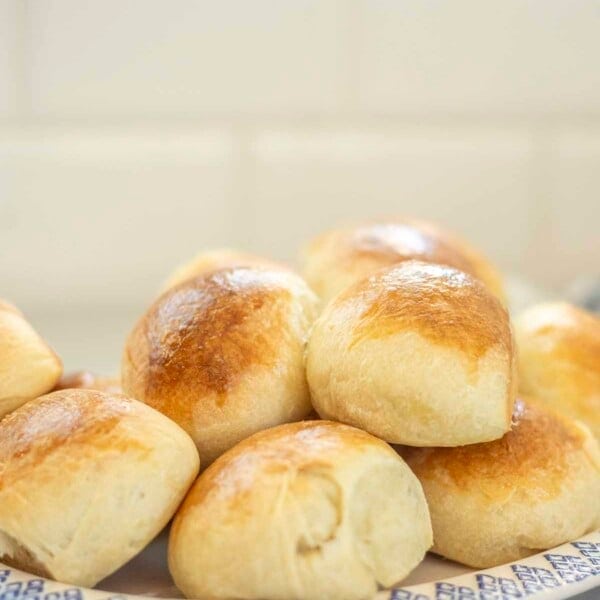






Would you make any adjustments if using all purpose einkorn flour? I also use einkorn starter. Do I need more water? What texture should my dough be? Will it be shapable?
I haven’t tested this recipe with einkorn, but you would likely need to make some adjustments to the liquid amounts. You can reference my einkorn sourdough bread recipe to help: https://www.farmhouseonboone.com/einkorn-sourdough-bread
This recipe turned out great! My family loved it, and it was much easier than some other recipes.
Yay!! So wonderful to hear.
We followed the recipe and ended up with a gorgeous “loaf” of bread! Unfortunately, we really didn’t care for the flavor…way too tangy for us. Can we decrease and/or eliminate the discard?
If you decrease or eliminate the discard you would probably need to add a little more water. Another option would be to add active starter. Discard tends to be tangier than active starter. Hope that helps.
I just started making sour dough breads. Your recipe is excellent. I make it a lot. Thank you
That is great to hear! So glad you liked it. Happy baking.
My first few times I made this loaf they turned out great, that was this summer. Now, I’ve tried it 3 times and I don’t get any rise after I’ve shaped it and my loaf looks like a pancake. Can I rescue it? I’ve waited 90 minutes, should I give it more time?
I’m no professional, but it could be that the room temperature your dough is resting in might be too cold.
Thank you so much for responding! I keep my house 71-72 but that still may be too cold.
Can u use rapid rise yeast.How long do u let it rise b4 turn out, shape & rest?
It would just use the regular yeast for this recipe.
Can I put the dough in the fridge after the 12 hour rise and bake later?
I would be afraid it would over ferment since it includes commercial yeast.
I was forced to do this yesterday. Was my first time using the recipe, had shaped and scored after the 12 hour forment and 1hr rise and life come up and I wasnt going to be able to be home to cook so I put it in a bowl, covered with a towel and put in fridge. 8 hours later still preheated the dutch, put it in cold and it all turned out just fine. You could tell the skin had dried out a bit coming from the fridge (so it wasnt sticky at all) but it was delicious!!
This bread was my first attempt at a sourdough bread, and it’s come out perfect every single time! We love this stuff!
Yay! That is amazing to hear.
What happens if I score the bread before the second rising? Is it still okay?
It will be fine. You may need to score again.
I want to add spelt and rye flour to the recipe. Should I just substitute or change my sourdough or water weights?
Spelt and rye will create a more dense final product, so you’ll likely have to adjust the water or the flour amounts. You could also try my Rye Bread recipe here: https://www.farmhouseonboone.com/sourdough-rye-bread
Can I split the dough before I form it and make two smaller bread bowls?
I don’t see why not!